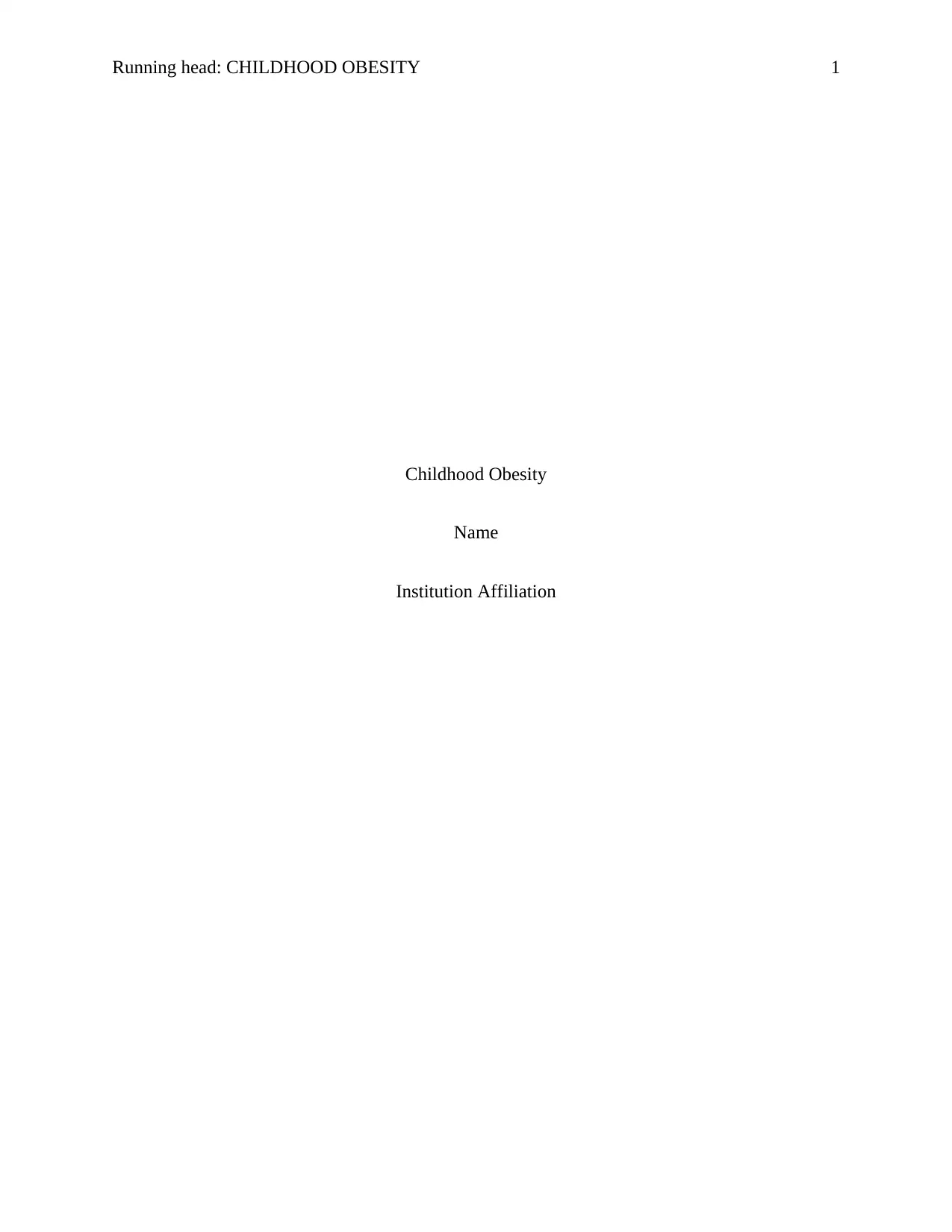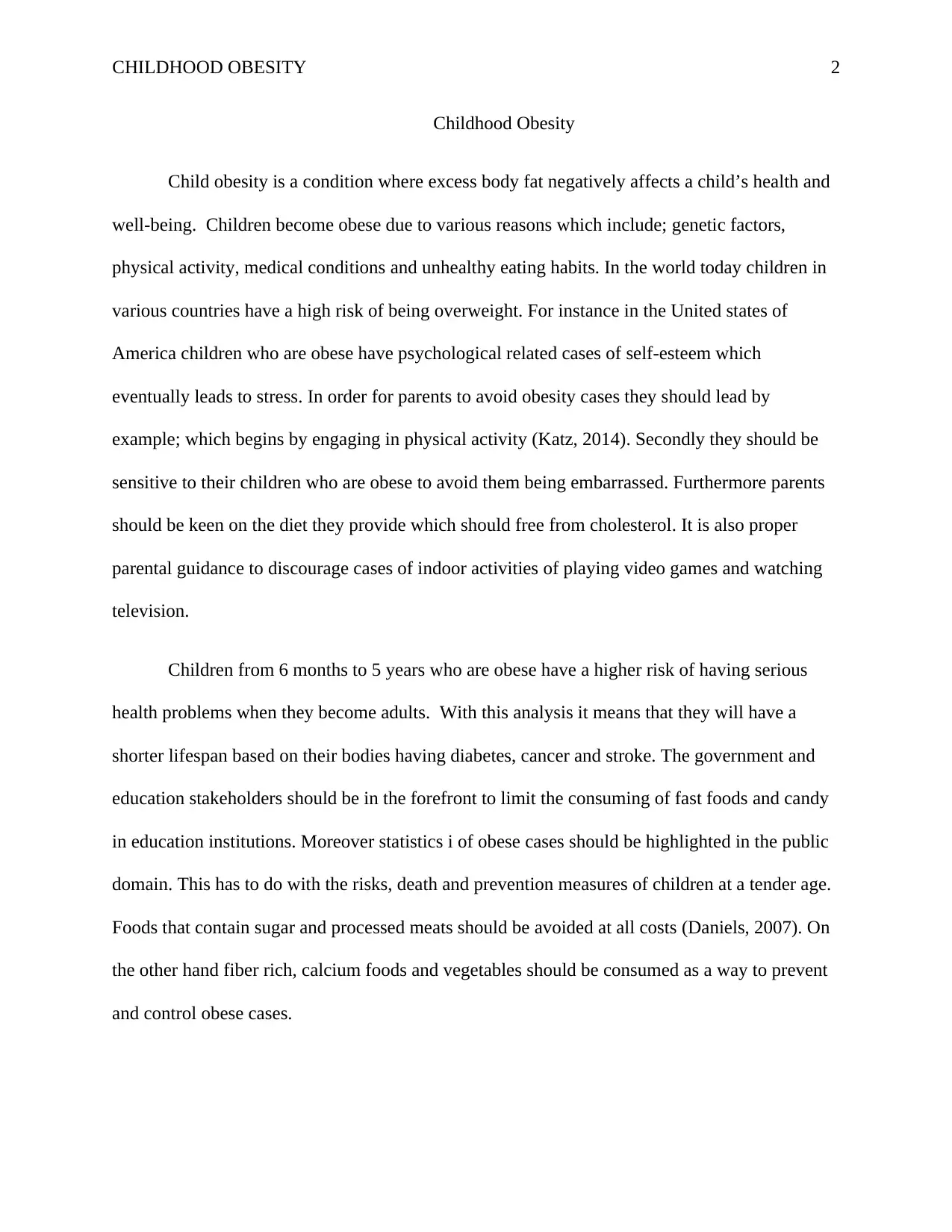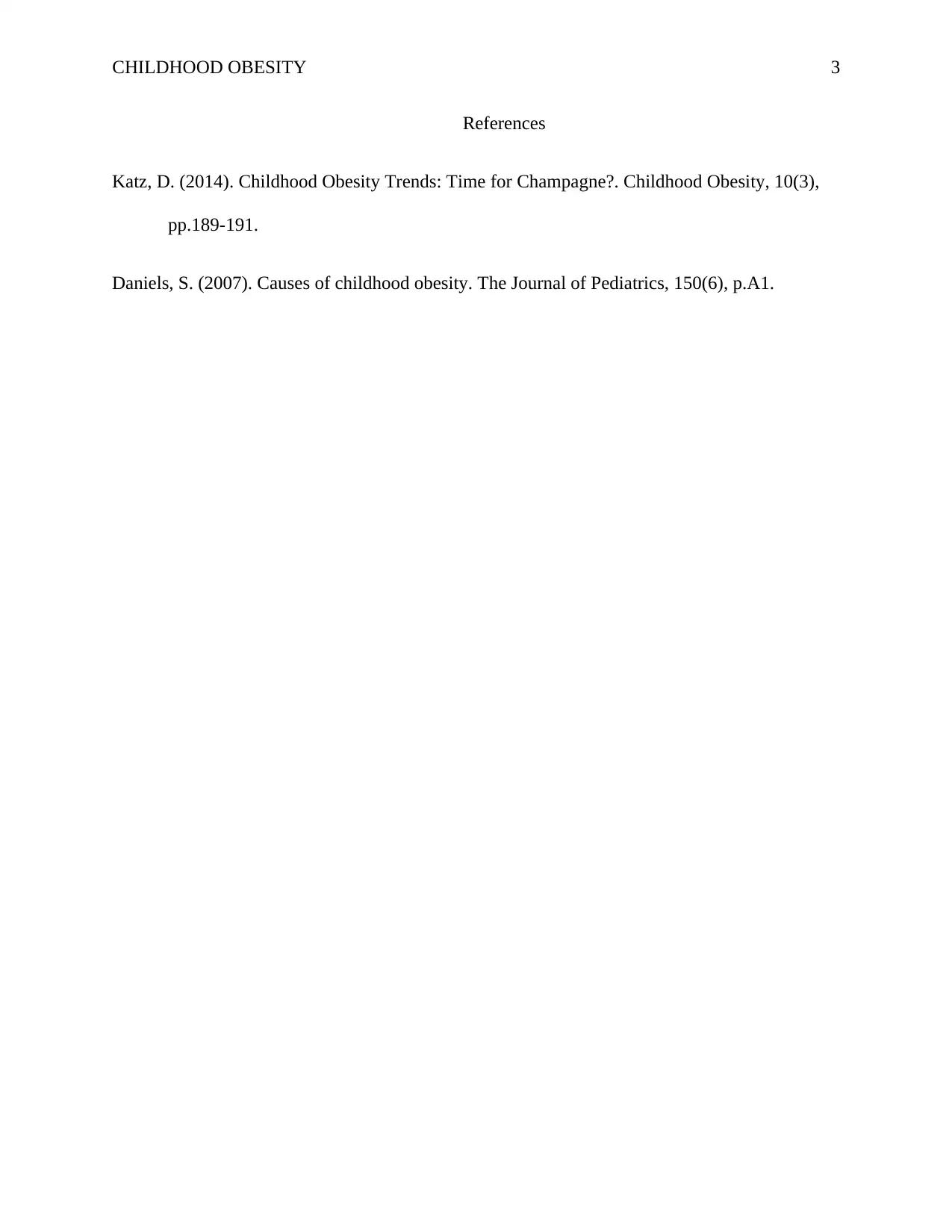Childhood Obesity: Causes, Risks, and Prevention Strategies Report
VerifiedAdded on 2020/04/07
|3
|375
|50
Report
AI Summary
This report delves into the multifaceted issue of childhood obesity, examining its causes, risks, and potential prevention strategies. The report highlights the influence of factors such as genetic predispositions, physical activity levels, and dietary habits on a child's weight. It acknowledges the significant health risks associated with childhood obesity, including conditions like diabetes, cancer, and stroke, and emphasizes the importance of early intervention. The report underscores the role of parents in setting healthy examples, encouraging physical activity, and promoting nutritious eating habits. Furthermore, it advocates for governmental and educational initiatives to limit the consumption of unhealthy foods and raise public awareness about the issue. The report concludes by emphasizing the importance of a balanced diet rich in fiber, calcium, and vegetables to effectively manage and prevent childhood obesity.
1 out of 3










![[object Object]](/_next/static/media/star-bottom.7253800d.svg)